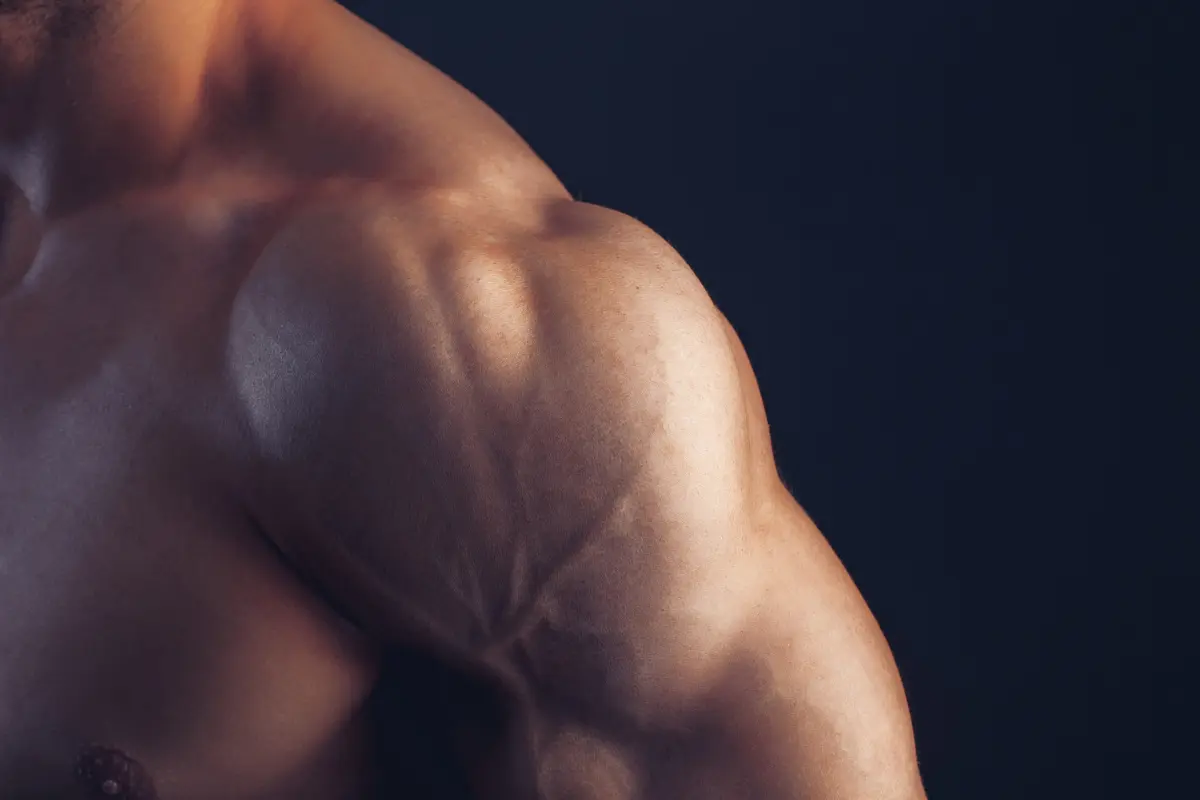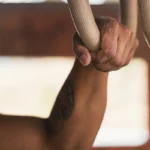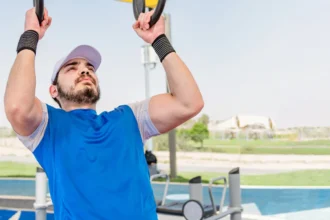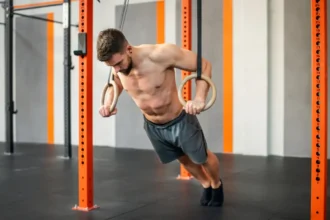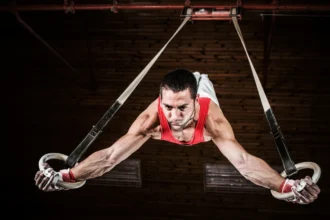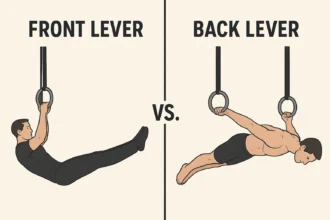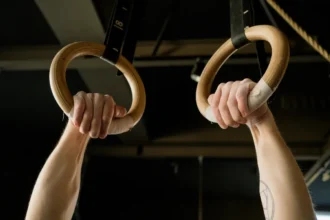Gymnasts are known for their powerful, sculpted physiques, and one of their standout features is their broad, muscular shoulders. How exactly do gymnasts achieve such impressive shoulder development?
The secret lies in a combination of specific training methods, exercises, and body movements that focus on the shoulder joint and its surrounding muscles.
In this guide, we’ll break down the four key factors that contribute to gymnasts’ big, rounded shoulders, and show you how to incorporate these steps into your own workout routine.
1. Preparing the Shoulder Joint: Prehab Exercises
Before diving into heavy lifting and advanced moves, gymnasts focus a lot of time on preparing their shoulder joints. The shoulder is a vulnerable area, and without proper preparation, it can be easily injured. That’s why the first step in developing gymnast-like shoulders is prehab—a proactive approach to joint care that includes mobility and stability exercises.
Key Exercises:
- Scapular Push-Ups: These work on shoulder stability and are crucial for shoulder health.
- Scapular Adductions and Depressions: These exercises target the scapula (shoulder blades), enhancing control and stability.
- Elastic Band Exercises: Movements like shoulder flexions, extensions, lateral raises, and rotations are key. These exercises strengthen the muscles around the shoulder and help improve mobility.
In the initial stages of training, these prehab exercises are done with low to moderate resistance and higher repetitions to ensure gradual strengthening and mobility. Incorporating these into your workout routine will not only keep your shoulders injury-free but will also lay the foundation for more advanced exercises.
2. Mastering the Basics: Strength Training
Once the shoulders are well-prepared, gymnasts move on to building strength with a focus on basic upper body exercises. Gymnastics training often involves a lot of bodyweight exercises, which are fantastic for developing muscle strength in the shoulders.
Key Basic Exercises:
- Push-Ups: These are great for developing the front part of the shoulders (the anterior deltoids).
- Rows and Pull-Ups: These exercises strengthen the back part of the shoulders (posterior deltoids).
- Dips and Handstand Push-Ups: These exercises provide a more intense shoulder workout and are staples in a gymnast’s routine.
While these exercises work many areas of the shoulder, the lateral deltoids (the side muscles of the shoulder) may not be directly targeted with bodyweight exercises alone. However, gymnasts still get great results for their side delts thanks to the overall shoulder strength built from these foundational exercises.
If you’re aiming for aesthetics and want to specifically focus on the side delts, lateral raises (using dumbbells, cables, or resistance bands) are a great option. Gymnasts sometimes use resistance bands as an alternative to dumbbells and cables, especially when access to weights is limited.
3. Straight Arm Strength: A Secret to Big Shoulders
One unique aspect of gymnastics training is the use of straight arm exercises. These exercises are especially effective because they require the shoulders to work in a fully extended position, which puts a lot of tension on the deltoid muscles—particularly the anterior deltoid.
In straight arm exercises, the delts work hard to stabilize the arms, while other muscles like the biceps also play a supporting role. Common straight arm exercises include the L-sit, elbow lever, shoulder stand, and advanced movements like the planche or press to handstand. These exercises help build shoulder strength and definition while uniquely engaging the delts.
It’s important to gradually progress to these advanced movements. Start with foundational straight-arm exercises, such as the L-sit and elbow lever, to build the strength needed for more advanced skills.
4. Routines That Demand Shoulder Strength
The final factor contributing to gymnasts’ big shoulders is the sheer demands placed on their shoulders during routines. In men’s gymnastics, three out of the six events (pommel horse, parallel bars, and rings) are particularly taxing on the shoulders. These events involve a lot of weight-bearing support on the arms, naturally building shoulder strength over time.
Event-Specific Shoulder Workouts:
- Pommel Horse: Gymnasts are constantly shifting their body weight from one shoulder to the other during the routine.
- Parallel Bars: Exercises like swings, presses to handstands, and other holds place significant stress on the shoulders.
- Rings: The muscle-ups, planches, Maltese crosses, and L-sits all require intense shoulder strength.
While other events like the horizontal bar may involve more dynamic movements and less direct weight-bearing, certain skills still demand a solid foundation of shoulder strength.
How to Build Shoulder Strength Like a Gymnast
Now that we understand the key components of gymnast shoulder development, here’s a step-by-step guide to help you train your shoulders like a gymnast:
- Prehab the Shoulders: Incorporate scapular push-ups, elastic band exercises, and mobility drills to prepare your shoulders for more intense training.
- Master the Basics: Add bodyweight exercises like push-ups, rows, dips, and pull-ups to your routine. These will strengthen the delts and surrounding muscles.
- Progress to Straight Arm Exercises: Work on basic moves like the L-sit, elbow lever, and shoulder stand to engage your shoulders in a fully extended position.
- Practice Advanced Movements: As you get stronger, move on to more challenging exercises like handstand push-ups, scapula swings, and planche variations.
- Supplement with Dumbbell or Band Exercises: Incorporate lateral raises and other shoulder exercises using dumbbells or resistance bands for additional targeting of the side delts.
With consistent training, you’ll start to see results that resemble the powerful, rounded shoulders of gymnasts. Whether you’re training for strength or aesthetics, these exercises will help you build a solid shoulder foundation that will support you in both gymnastics and other fitness activities.
Final Thoughts
Building gymnast-like shoulders requires a mix of mobility, strength, and endurance exercises. Focus on joint preparation, master basic bodyweight exercises, progress to straight arm training, and challenge your shoulders with demanding routines. With dedication and the right approach, you’ll see noticeable improvements in your shoulder strength and appearance.


